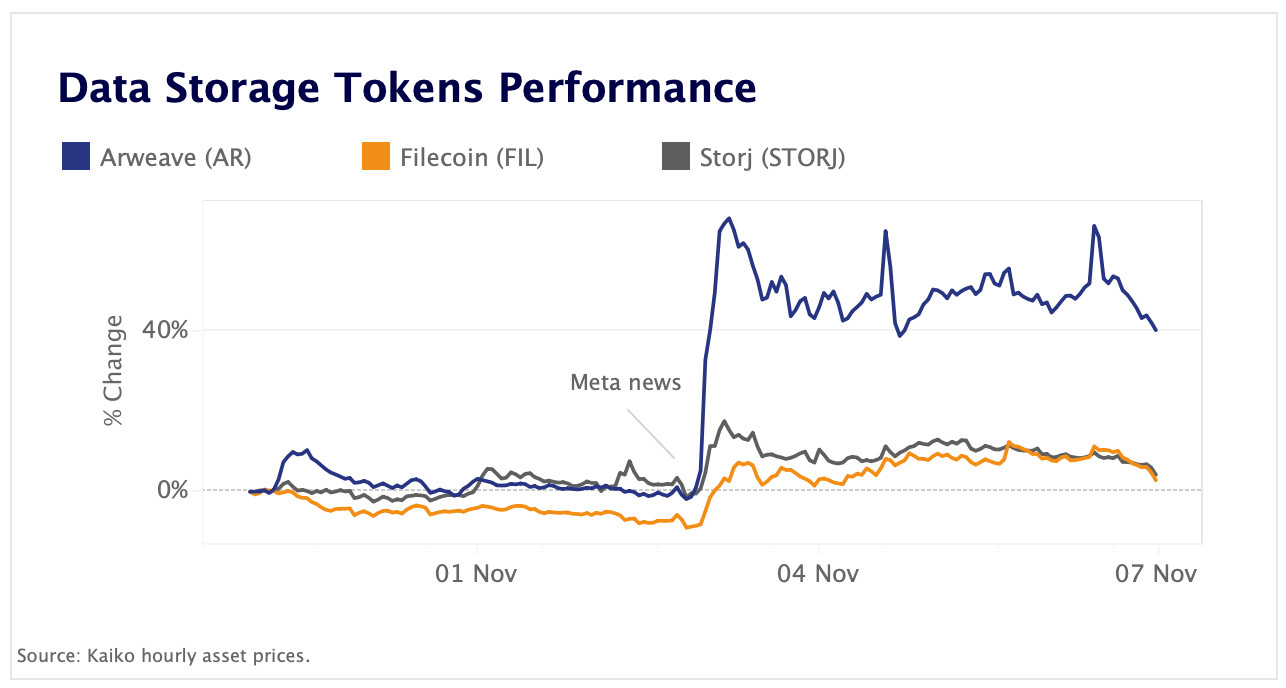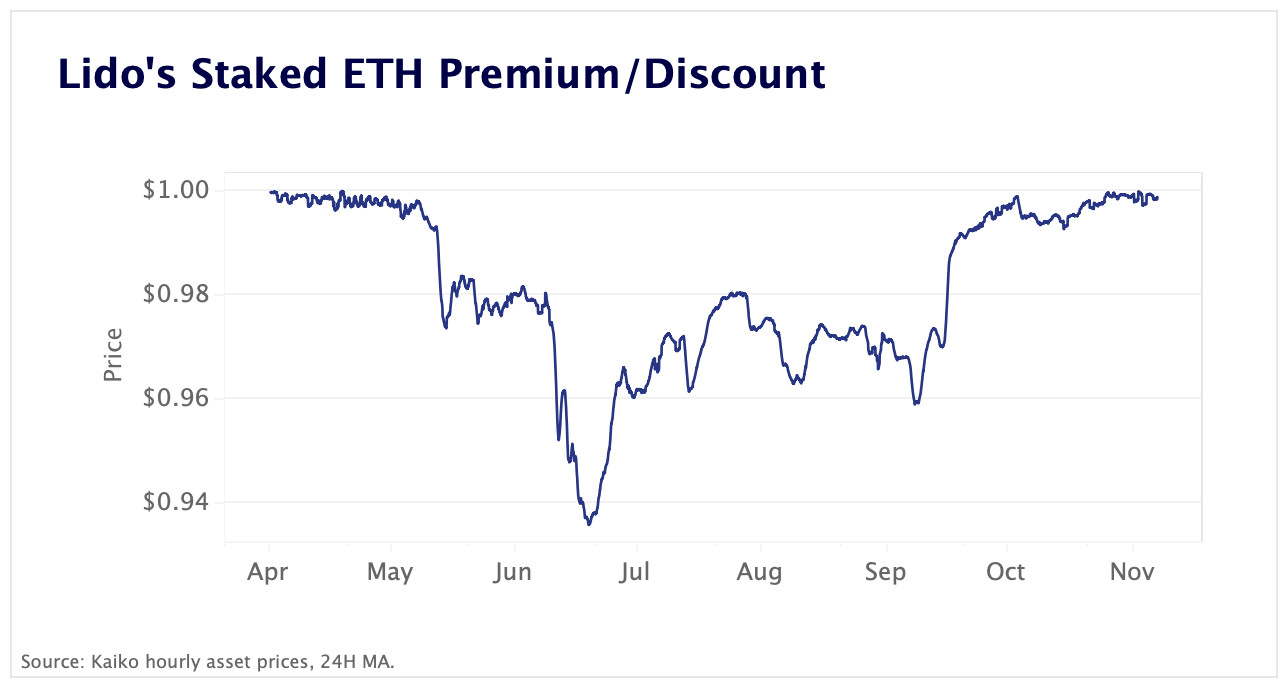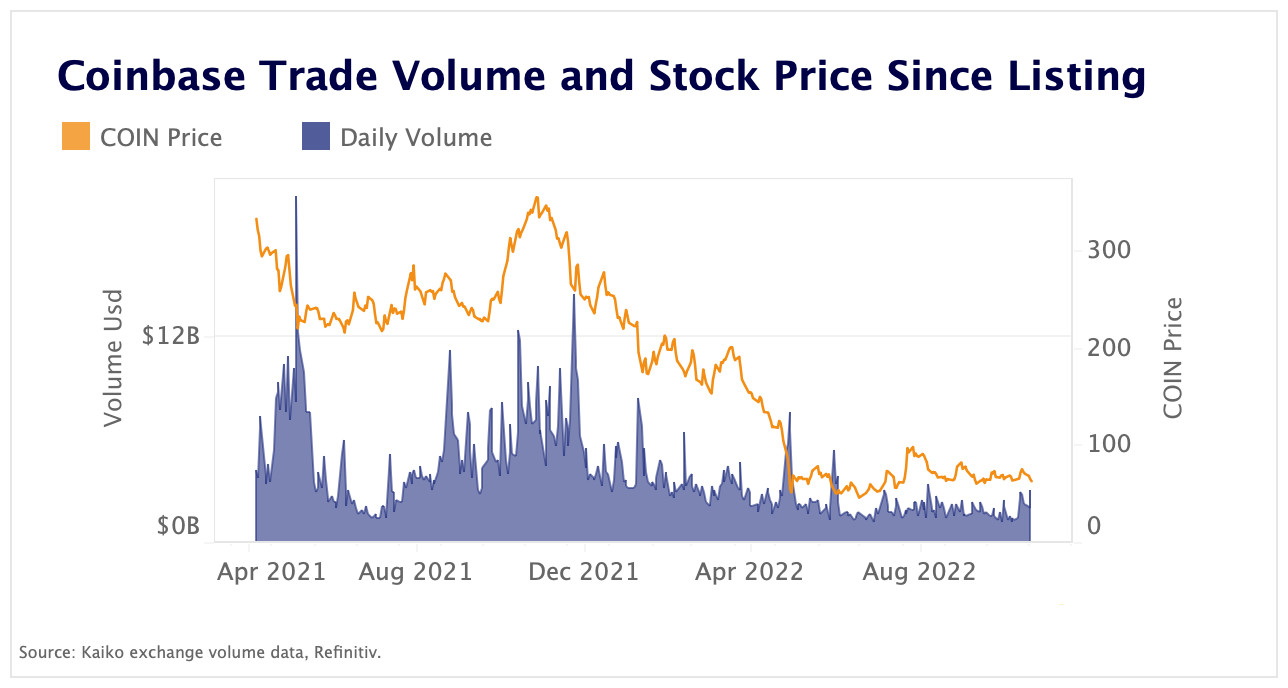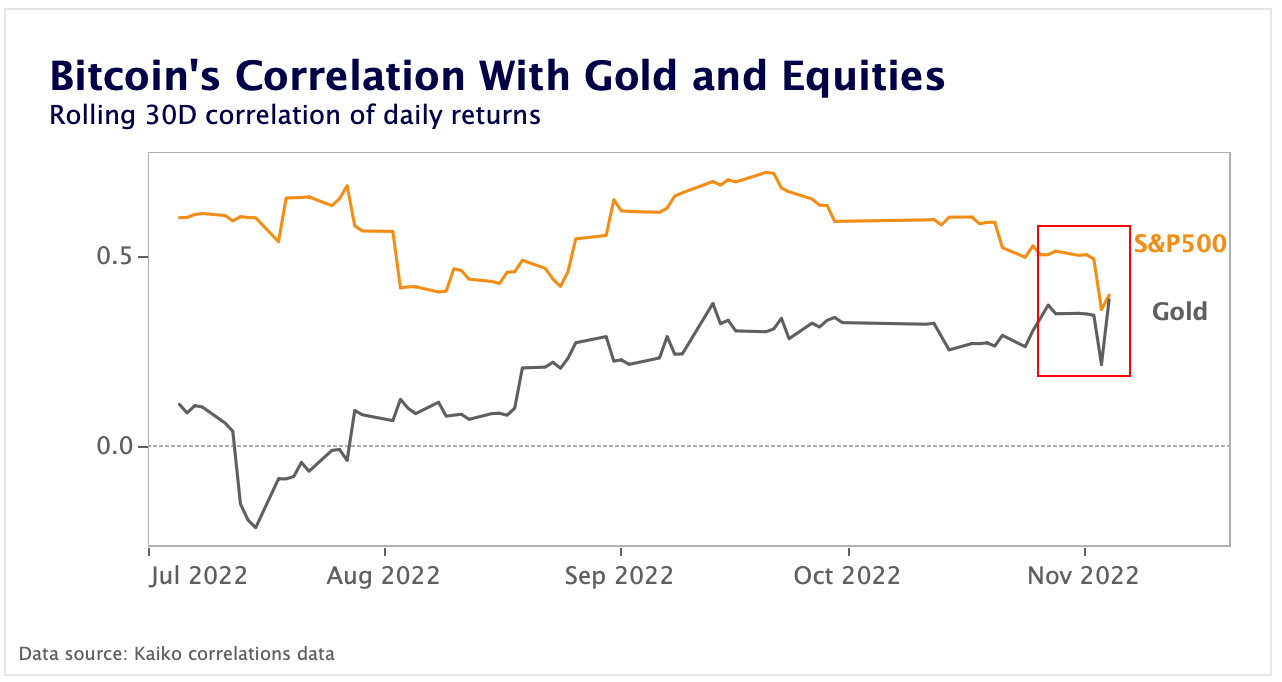A summarizing review of what has been happening at the crypto markets of the past week. A look at trending sectors, liquidity, volatility, spreads and more. The weekly report in cooperation with market data provider Kaiko.
The last 7 days in cryptocurrency markets:
- Price Movements: For the first time since April, Lido staked ether (stETH) now trades at parity with ETH.
- Market Liquidity: Coinbase reported lower than expected earnings due to a continued rout in trade volume.
- Derivatives: ETH perpetual futures volume is now higher than BTC volumes as traders pounce at renewed volatility.
- Macro Trends: BTC's correlation with gold hit a 2-year high.
Bitcoin holds steady amid equity volatility
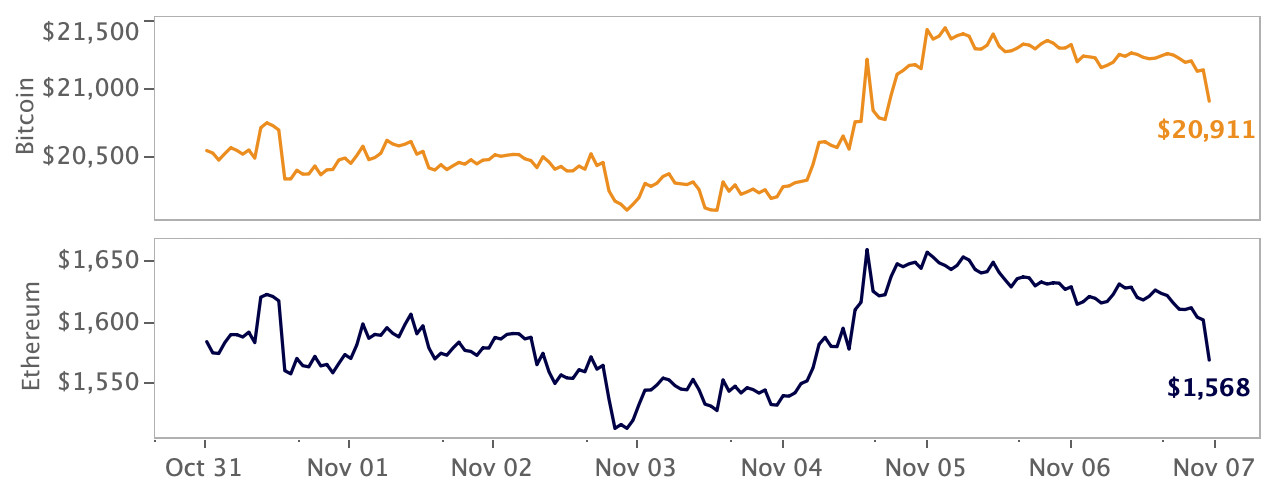
Crypto markets moved higher towards the end of the week off the back of positive economic indicators, namely a better than expected jobs report despite another interest rate hike from the Fed. On the institutional side, JP Morgan executed its first blockchain-based trade, Fidelity launched crypto trading services for their clients, and Twitter halted its plans to build a crypto wallet. On the crypto side, Deribit — the largest crypto options exchange — got hacked for $28mn.
Meta embraces decentralised data storage
Last week, Facebook and Instagram parent company Meta announced it will allow its users to create and sell NFTs to their fans through Layer 2 scaling solution Polygon and the decentralized data storage protocol Arweave.
Arweave aims to meet the data storage needs of Web 3-related projects by offering permanent data storage and retrieval with one-time payment, using a combination of blockchain technology and economic incentives for storage providers. Its native token AR, which is used for payments and rewards within the ecosystem, surged by over 60% on the news. Other decentralized data storage solutions such as peer-to-peer network Filecoin and cloud storage network Storj also ended the week positive, rising by 3% and 4% respectively.
It unclear whether growing social media adoption will be enough to spur a sustainable market-wide rally in the NFT space, which has been hit particularly hard by the crypto bear market. However, positive sentiment is building. Perpetual futures open interest for both AR and FIL tokens spiked by 50% and 20% respectively on Nov 2 while funding rates turned positive, suggesting traders are entering long positions.
The stETH discount is no more
Almost two months on from the successful completion of the Merge, Lido Staked ETH (stETH) and Ethereum (ETH) have reached parity for the first time since April. The stETH discount reached a peak of over 6% in the early summer as the industry reeled from the collapse of crypto trading and lending firms, some of which held stETH and had to liquidate their positions. It’s important to note that stETH functions as a rebase token, meaning that the amount of stETH held in a user’s wallet increases each day in accordance with yield. Thus stETH and ETH should theoretically remain in balance. Barring any significant developments, it is likely that the discount will remain very small or nonexistent.
Coinbase reports Q3 loss amid falling trade volumes
Coinbase, the largest U.S.-based exchange, reported a wider than expected net loss in Q3 of $545mn, due to falling transaction income. Since its stock market debut in April 2021, the exchange's daily volumes have more than halved from an average of around $5B to $2B in October 2022. Over the same period Coinbase’s share price has plummeted by more than 80%.
Interestingly, while Coinbase’s core business - crypto trading - is falling, its participation in the USD Coin (USDC) ecosystem is increasingly lucrative, cushioning the impact of the prolonged bear market. Interest earnings, which are mainly generated from USDC’s reserves, have emerged as the second source of revenue after transaction income (they are up by over 200% relative to Q2 to $102mn)
According to Coinbase, its bad performance in Q3 is also due to the regulatory uncertainty in the U.S. which has resulted in a stronger decline in crypto trading on U.S.-established exchanges relative to the rest of the world.
When looking at BTC’s hourly average trade volume on Coinbase from 2021 to 2022, trading activity during the overlap between EU hours and U.S. hours (12pm-16pm UTC) has remained relatively stable. By contrast, trading at the end of US opening hours (21pm UTC) and between 23pm and 2am UTC – which corresponds to Asia opening hours – has declined sharply year-over-year. The trend could suggest that Asia-based traders have exited the exchange. This is likely due to traders’ and market makers' increased cost sensitivity and growing competition from global exchanges such as Binance, which eliminated BTC trading fees in July.
ETH perpetual futures volume now exceeds BTC's
Leading up to the Merge, we reported that ETH hit all time highs in perpetual futures market share vs BTC. Shortly after the Merge, BTC re-claimed its dominance and possessed over 60% of volumes. However, in the last few weeks ETH perpetual volume share has surged off the back of increased price volatility relative to BTC, and is now at 54%. When volatility surges, volumes in perpetual futures markets follow as investors look to both hedge and speculate on the wild price movements.
As a relatively new asset class, the perpetual futures market is still maturing and the makeup of exchanges commanding volumes is constantly shifting. For most exchanges, when comparing Q3 volume for last year compared to this year, volumes are down significantly, usually more than 50%. This coincides with falling spot volumes in crypto in this bear market compared to higher volumes this time last year as the bull market came to a close. Additionally, most crypto exchanges have enforced leverage restrictions since the 2021 bull market, with FTX going from 100x leverage to 20x. Not only does this reduce liquidations and volatility in the futures market but it also reduces volumes traded on perpetual futures.
Interestingly, OKX have increased their volumes in perpetual futures from Q3 2021, by over 100% in the case of ETH perps. Huobi’s derivative volumes have suffered the most as the exchange has struggled with regulatory battles. Bitmex announced last week they were pivoting to focus on their derivatives strategy and making layoffs in other areas, as their BTC and ETH perpetual volumes are both down over 50% vs Q3 last year.
Fed hikes rates another 75 bps, spurring market volatility
Markets whipsawed last week after the U.S. Fed maintained its hawkish stance, hiking rates by 75 bps for a fourth meeting in a row. Despite hinting that future rate increases will be smaller, the Fed made it clear that it will keep rising rates and the peak interest rate (or terminal rate) will be above previously anticipated. In just nine months, the U.S. central bank has hiked rates by a cumulative of 375bps, its fastest pace ever. For context, the similar 2004-06 rate hike cycle took place over the course of 28 months.
Bitcoin (BTC) showed relative resilience to stock market turmoil, ending the week above $21k and outperforming the tech-heavy Nasdaq 100, which fell by 2% on the day after the Fed’s FOMC meeting.
Bitcoin's correlation with gold hits two-year high
Over the past month, BTC's correlation with the US stock market has weakened considerably to just .4, retreating from September’s highs. By contrast, its correlation with gold has been on the rise since the start of Q3. Despite strong demand from central banks, gold has seen a decline in prices in the second half of the year after rising to multi-year highs in Q1 due to rising interest rates and strengthening US Dollar.


